What’s missing from this picture are the autumn crocuses. They should be blooming now. No, I don’t mean colchicums–they’re done. (And they’re not crocuses!!) I mean bona-fide crocuses that bloom in the fall. Crocus speciosus, to be precise. I planted more than one hundred of them four years ago, and for the last three years they have bloomed faithfully and generously, saving me from a flower-less November.But not this year.
What happened to them? I searched for rodent holes, tunnels, activity of any kind. I didn’t see any. I had taken precautions when I planted them.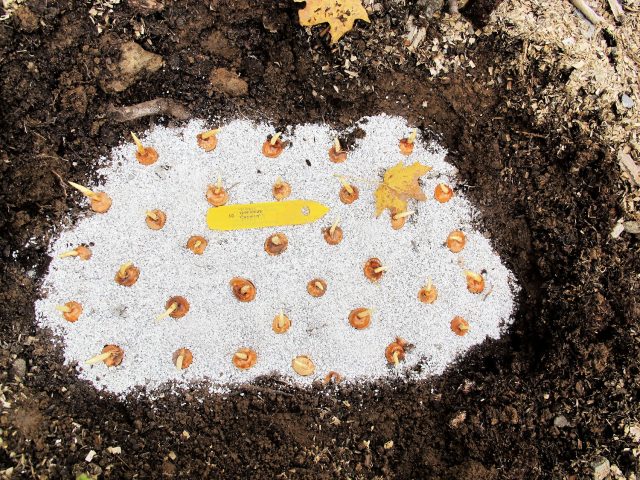
When I planted them, I placed the crocus corms on top of grit, and then covered them with grit, before replacing the soil on top.
I consult the experts
It probably won’t surprise you to learn that there’s a Facebook group devoted to Crocus and Colchicum. I asked the many knowledgeable members what could have happened to my crocuses. One member suggested that it was too dry for them to form flowers. We didn’t have the extremely dry conditions that caused parts of my state to be declared in drought this summer, but we had an almost snowless winter, and it was dry enough to make this gardener worry about her garden. It hadn’t occurred to me that this could have an impact on the crocuses. I had thought most crocuses actually liked it rather dry, but I suppose in their native clime there is a wet season when they form their flowers.
If leaves emerge next spring, then all is not lost. I can hope for flowers again next fall. But, if I see no leaves next spring, I will have to be more assertive in my detective work. I really didn’t want to disturb the hellebore roots going into winter, especially since they are finally starting to look substantial. I think they will tolerate a bit more root disturbance in the spring, after they bloom. That’s my current theory, at least.Blooming or faking it
From a distance, it may look like I still have flowers blooming. A closer inspection reveals that the last of them just freeze-dried on the plant. Roses, especially, are good at that.
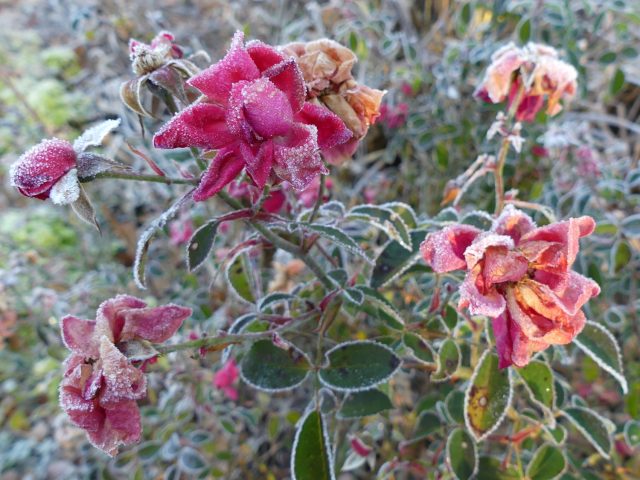
They look kind of shabby up close, but from the warmth of the kitchen window, the Flower Carpet® roses by the mailbox provide a spot of color.
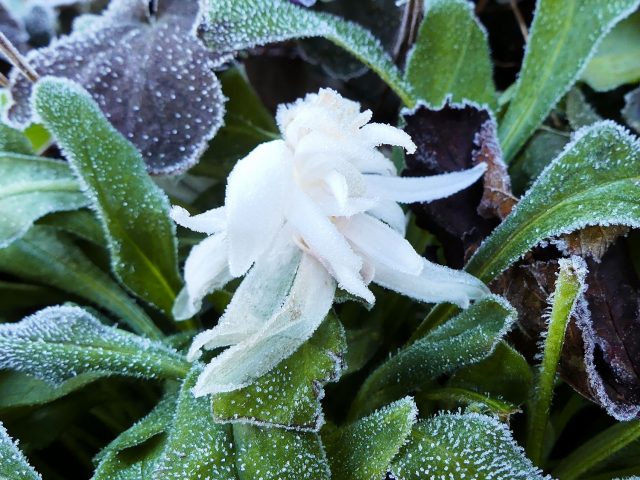
And I do still have a colchicum blooming after all, a lone ‘Alboplenum’ sheltered by forget-me-not foliage.
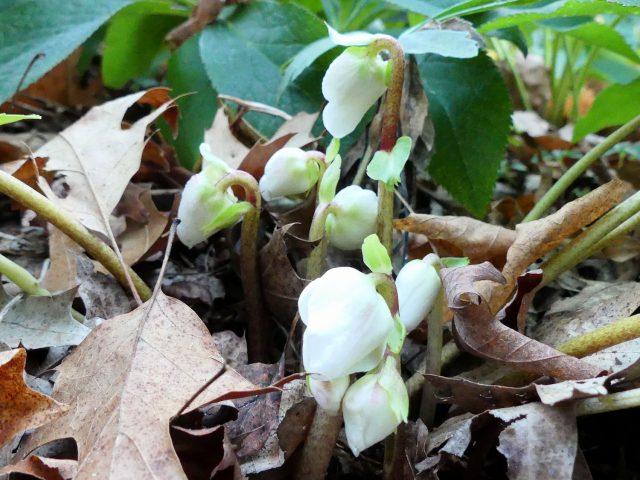
And my ‘Thanksgiving bloom’ hellebore is waiting in the wings, but may be buried by the snow predicted for this weekend.
Inspired by the words of Elizabeth Lawrence, “We can have flowers nearly every month of the year,” Carol of May Dreams Gardens started Garden Bloggers Bloom Day. On the 15th of every month, garden bloggers from all over the world publish what is currently blooming in their gardens. Check it out at May Dreams Gardens.


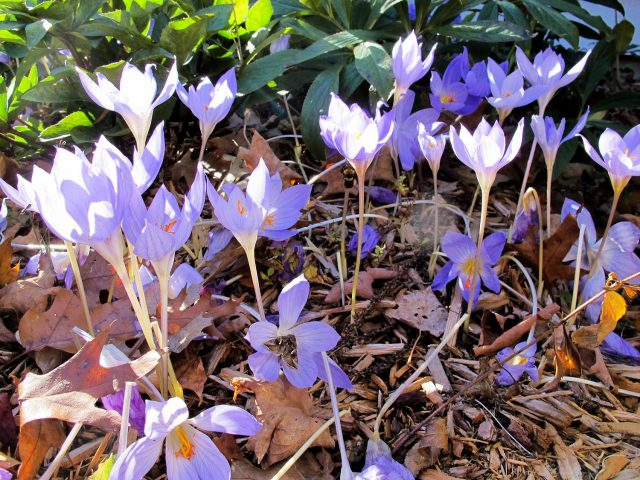
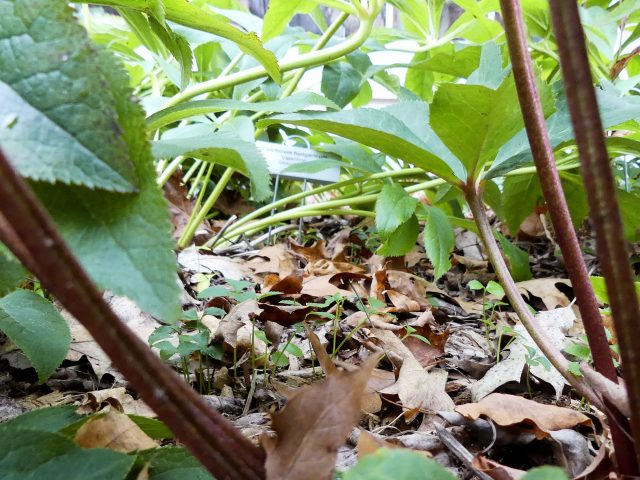
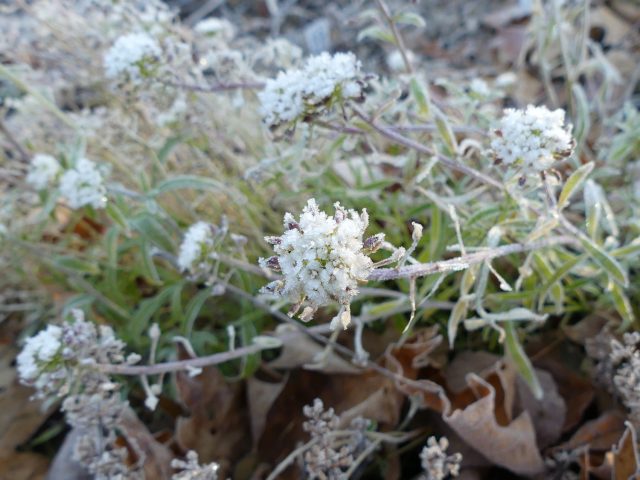
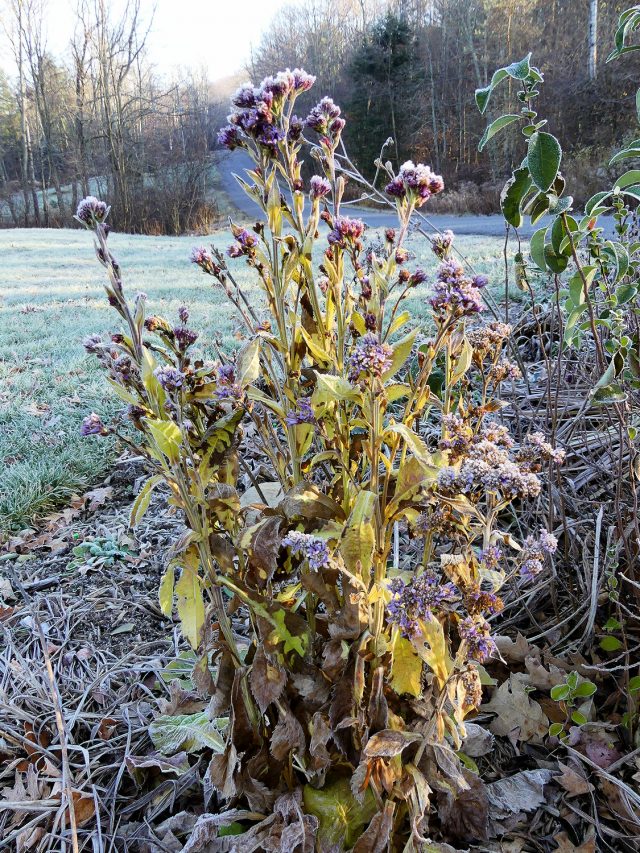
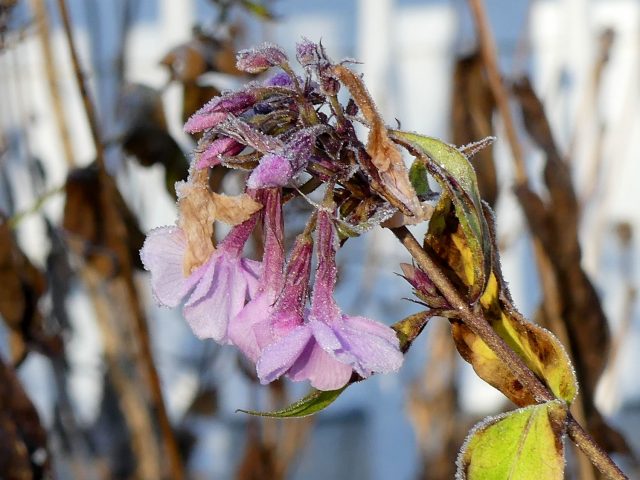
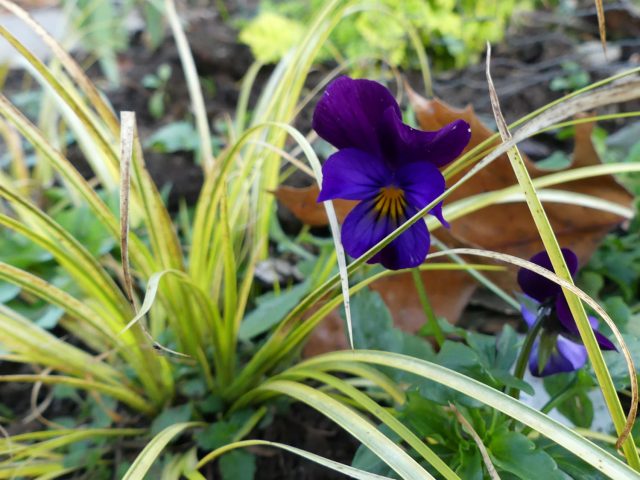



Kathy – We left our colchicums in Heath, elevation 1700 feet, but I have not yet begun to plant bulbs down here in the lower elevations. I am enjoying not having to worry so much about bitter winter temperatures, but we have had several hard frosts so the garden is fairly bleak, especially this morning in a gray rain. Actually, any rain at all is more than welcome.
So beautiful this time of year even if the crocus are missing. Love all those frosty shots. Just a thought, I feel this autumn has been particularly warm for North Country – maybe your crocus are waiting for a bit of persistent cold? Temperature does trigger blooms sometimes. We are expected to have snow also. I have a feeling once the snow flies it won’t stop until Spring. I almost made a clean escape South, but I’m looking forward to a snow day!
That thought had crossed my mind, but we have had many nights in the low 20s, and I eventually felt like it had gotten cold enough often enough.
Kathy, I had fall crocus for a few years, several years ago. but about four years after I planted them, they just disappeared. No rodent issues here. Just no fall crocus anymore. 🙁 Well, except for the C. sativus, which was prolific this year. Sometimes it’s sparse, but it has always given me a few blooms even in an off year.
I hope you have crocus leaves next spring!
I had a lot of bloom from Crocus specious ‘Conqueror’ in Schoharie County this fall, though no C. Sativus, in spite of abundant foliage this spring. Odd.
I’ve heard C. sativus can be persnickety, but it’s not hardy here anyway.
Aren’t you down by Binghamton? I’m north of you, if perhaps at a lower elevation (800′). I think part of gardening is zone denial and experimentation. If I can get these crocus species to survive a few years and produce foliage, if not always flower reliably, Then I’m encouraged. I’ve had the same foliage, but no flowers situation with Crocus cartwrightianus, but suspect they’ll flower one of these years if there is foliage.
I am north of Binghamton at 1300ft elevation. I am a cold zone 5, meaning I get late frosts in spring and early frosts in autumn. I do agree that part of gardening is zone denial, but I have never been particularly interested in growing Crocus sativus, so it’s easy for me to say it’s not hardy here and leave it at that. I think a lot of crocus beyond the most common ones require more drainage than I can give them and more summer heat than I can give them, and so I would have to really love them to go the extra mile for them. I did purchase some less hardy colchicums this year and if they come through this first winter and thrive in my carefully chosen microclimate, I will then try them out in other parts of the garden where there are less perfect conditions. To understand what I meant by persnickety, read this post by a gardening friend in Tennessee.